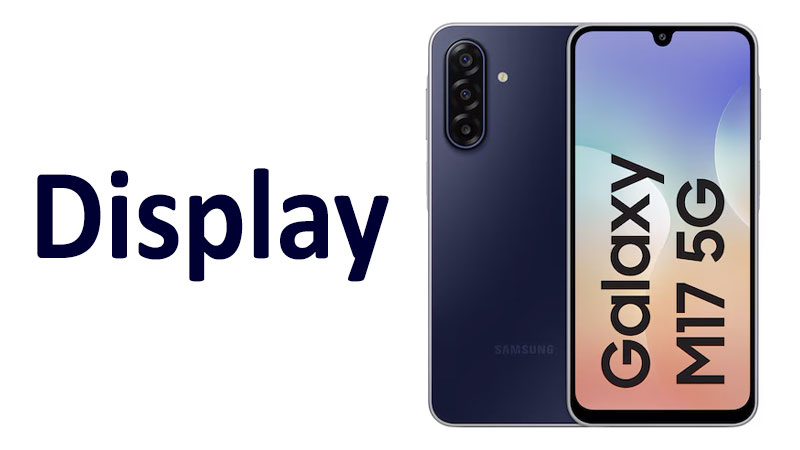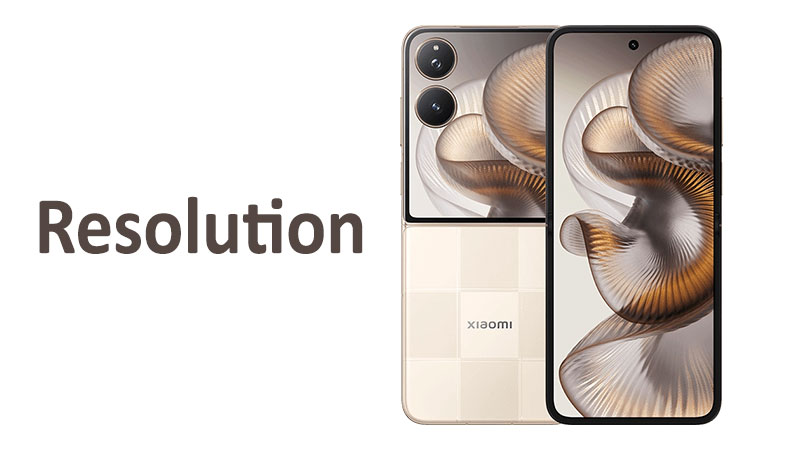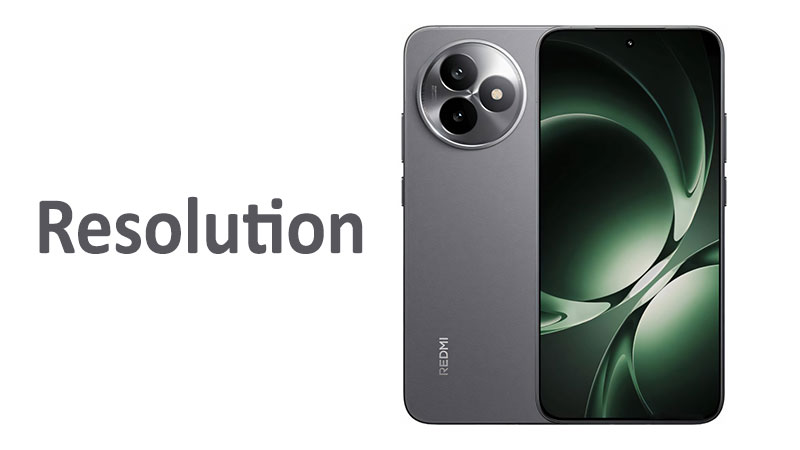The Samsung Galaxy M17 Display is a key feature that defines the user experience. The quality of this component often determines overall satisfaction with a new smartphone. Samsung designed the M17 to deliver a premium viewing experience without the premium price tag. This detailed review will explore every aspect of the display technology. We will examine the Super AMOLED panel, the high 90Hz refresh rate, and the robust Gorilla Glass Victus protection. Understanding these technical specifications helps consumers make an informed purchase decision.
Core Display Technology: Super AMOLED Excellence
The M17 features a Super AMOLED display panel. This technology is a hallmark of Samsung’s display expertise. AMOLED stands for Active-Matrix Organic Light-Emitting Diode. The “Super” designation means the touch sensor is integrated directly into the screen. This integration reduces thickness and improves responsiveness. The result is a lighter phone with a more immediate touch experience.
How Super AMOLED Works
Super AMOLED screens produce light through organic compounds. Unlike LCDs, they do not require a separate backlight layer. Each pixel acts as its own light source. This ability provides two significant benefits for the end user.
First, it allows for perfect black levels. When a pixel displays black, it simply turns off completely. This creates an infinite contrast ratio, making colors appear extremely vibrant. Dark scenes in movies or games gain incredible depth and realism.
Second, Super AMOLED is highly power-efficient, especially when viewing darker content. Since black pixels are off, they consume no power at all. This efficiency contributes positively to the M17’s battery life. This is a vital consideration for modern smartphone usage.
Specialized Comparison: AMOLED vs. LCD
When comparing the M17’s Super AMOLED to standard LCD panels, the difference is noticeable. LCD screens rely on a backlight. They can only block light, never truly extinguish it. Consequently, their black tones often appear as dark gray.
The color reproduction on the M17 is also superior. Super AMOLED offers a wider color gamut and higher saturation. Photographers and video enthusiasts appreciate the fidelity and punchy colors. This technology provides a significantly better visual experience than any comparable LCD phone. Samsung has consistently leveraged this advantage in the M-series.
Pros and Cons of Super AMOLED
A major pro is the exceptional contrast and deep black levels. Another key advantage is the wider viewing angles. The panel remains clear and color-accurate even when viewed from the side. Furthermore, the thinner panel allows for a sleeker phone design.
The main con historically was potential screen burn-in over long periods. However, modern manufacturing techniques have largely mitigated this risk. Another minor drawback is that colors can sometimes look oversaturated by default. Fortunately, Samsung provides display settings for adjusting the color profile to a more natural, subtle look.
Immersive Visuals: Size, Aspect Ratio, and Screen-to-Body Ratio
The Samsung Galaxy M17 features a generously sized display. It measures 6.7 inches diagonally. This screen size positions the M17 firmly in the large-screen segment. A bigger display improves almost all media consumption tasks.
Practicality of the 6.7-Inch Panel
A 6.7-inch screen is perfect for viewing video content. It provides an expansive canvas for mobile gaming. Reading and web browsing also become more comfortable with more on-screen space. Users enjoy less scrolling and a better overall experience.
However, the size presents a trade-off in terms of ergonomics. One-handed use is challenging for most people. Users often need to adjust their grip or use both hands for comfortable navigation. This is a common characteristic of large-display smartphones.
Aspect Ratio and Screen Real Estate
The M17 utilizes a modern 19.5:9 aspect ratio. This is a tall, narrow screen configuration. It is optimized for movie playback and app scrolling. Most cinematic content fits well on this ratio, minimizing black bars. The taller screen also maximizes the amount of information displayed in feeds or documents.
The physical dimensions translate to 110.2 cm2 of display area. This measurement confirms the substantial screen real estate. The expansive area contributes significantly to the immersive viewing experience.
Screen-to-Body Ratio Analysis
The device achieves an impressive screen-to-body ratio of approximately 86.0%. This ratio is a metric of efficiency. It indicates how much of the front of the phone is actually the display. A high ratio signifies thin bezels and a modern aesthetic.
An 86.0% ratio means the bezels around the screen are quite slim. This design choice contributes to the phone’s premium feel. The display essentially dominates the front face of the device. Consequently, distractions are minimal when the screen is active.
Smoothness Defined: The 90Hz Refresh Rate Analysis
The refresh rate is a critical factor in display quality. It dictates how many times the screen updates per second. The M17 display operates at a 90Hz refresh rate. This is a significant upgrade over the standard 60Hz rate found on many budget phones.
The 90Hz Advantage
A 90Hz screen updates 90 times every second. This rate is 50% faster than a 60Hz panel. The difference is immediately apparent to the user. Scrolling through websites or social media feels noticeably smoother. Animations appear fluid and highly responsive.
In gaming, the faster refresh rate reduces motion blur. It provides a competitive edge in fast-paced titles. The visual feedback is quicker and more satisfying. The improved smoothness enhances the overall perception of performance.
Specialized Comparison: 90Hz vs. 120Hz
While 90Hz is excellent, some competitor and higher-end models offer a 120Hz refresh rate. 120Hz provides the ultimate smooth experience.
However, 90Hz represents an ideal balance. It offers a substantial visual improvement over 60Hz. At the same time, it consumes less battery power than a 120Hz panel. Samsung chose 90Hz to maintain a good balance between fluidity and battery longevity. For the target segment, 90Hz offers the best return on investment for display performance.
Key Points for Buyers on Refresh Rate
Buyers must understand that the 90Hz mode is optional. Users can switch to a standard 60Hz setting to maximize battery life. This flexibility is a valuable feature. The 90Hz rate is active mostly in system menus and certain optimized apps. Not all applications or games support the higher frame rate. Users should check game compatibility for the best results.
Resolution and Clarity: FHD+ and 385 PPI Density
The Samsung Galaxy M17’s resolution is 1080 x 2340 pixels. This is commonly referred to as Full HD Plus or FHD+. The aspect ratio results in the extra vertical pixels (2340). This resolution is a standard benchmark for clarity in modern smartphones.
Understanding Pixel Density (PPI)
The display achieves a pixel density of approximately 385 pixels per inch, or ppi. Pixel density is crucial for image sharpness. A higher ppi means individual pixels are less discernible to the naked eye.
At 385 ppi, the display is remarkably sharp. Text appears crisp and clear. Images and videos show fine detail without pixelation. Most users will find this density entirely adequate for detailed viewing. It nears the standard “retina” threshold where human eyes struggle to resolve individual pixels.
Comparison to Higher Resolutions
While some flagship phones boast Quad HD+ or 1440p resolutions, 385 ppi on the M17 is a smart choice. Higher resolutions significantly increase the load on the phone’s processor. They also drain the battery much faster.
FHD+ strikes the perfect balance for a phone in this category. It delivers excellent visual fidelity. Simultaneously, it allows the processor to maintain smooth performance in demanding tasks. This choice prioritizes both clarity and efficiency.
Pros and Cons of the Resolution
The primary pro is the fantastic balance of sharpness and performance. The resolution ensures smooth gaming without overwhelming the GPU. The power efficiency is another major benefit.
The con is very minor. It is only noticeable when comparing the M17 side-by-side with a flagship 1440p device. For everyday use and media consumption, the 385 ppi clarity is more than sufficient.
Brightness and Visibility: 1100 nits High Brightness Mode (HBM)
Display brightness is essential for usability, especially outdoors. The Samsung Galaxy M17 boasts an impressive peak brightness of 1100 nits. This figure is available in High Brightness Mode (HBM). HBM automatically activates under direct sunlight.
What Nits Mean for the User
A nit is a unit of measurement for luminance. 1100 nits is a very high brightness level. This capability ensures excellent outdoor visibility. Even on the sunniest days, the screen remains readable. Direct sunlight often washes out dimmer displays. The M17 overcomes this common limitation effectively.
This high brightness is also critical for HDR (High Dynamic Range) content. It allows the display to showcase dramatic differences between the brightest whites and darkest blacks. This capability improves the visual quality of streaming content significantly.
Specialized Comparison: Brightness
The M17’s 1100-nit HBM easily competes with many flagship devices. Many competitors in the mid-range segment offer only 600 to 800 nits of peak brightness. This higher peak brightness is a major selling point for the M17. It directly translates to superior real-world usability outside.
It is important to note that the typical maximum brightness is lower. The 1100 nits is a peak achieved only for small areas of the screen. This occurs when automatically detecting bright ambient light. Nevertheless, the phone’s typical maximum setting is still quite luminous.
Key Points on Brightness Control
The M17 uses adaptive brightness technology. Sensors adjust the display output automatically based on the environment. Users rarely need to manually adjust the brightness slider. This smart feature enhances battery management and user comfort.
Users can also manually override the brightness. This flexibility is useful in specific conditions, such as driving. The reliable high brightness mode makes the M17 a dependable choice for outdoor workers and travelers.
Durability and Protection: Corning Gorilla Glass Victus
Durability is often overlooked when discussing display quality. However, the protection layer is vital for longevity. The Samsung Galaxy M17 screen is protected by Corning Gorilla Glass Victus. This is a top-tier protective glass technology.
Gorilla Glass Victus Explained
Corning developed Victus to address two key concerns: drop performance and scratch resistance. Previous versions of Gorilla Glass focused on one or the other. Victus offers significant improvements in both areas simultaneously.
Victus is laboratory-tested to survive drops onto hard, rough surfaces better than previous generations. This means the M17 display is more likely to withstand accidental drops. The phone is more robust against everyday clumsy handling.
Scratch Resistance Benefits
Scratch resistance is a major concern for smartphone users. Keys, coins, and grit often cause micro-scratches over time. Gorilla Glass Victus provides improved resistance to these fine scratches. This helps keep the large 6.7-inch Super AMOLED panel pristine.
The superior scratch resistance contributes to long-term display clarity. A scratched screen degrades the viewing experience, regardless of the panel technology. The M17’s robust protection helps maintain the original visual quality for longer.
Specialized Comparison: Protection Layers
Many mid-range phones use older generations of Gorilla Glass. Some cheaper models even use generic tempered glass. The inclusion of Gorilla Glass Victus on the M17 is a premium feature. It elevates the device’s durability beyond its direct competitors. This feature provides peace of mind for the buyer. It signals Samsung’s commitment to quality components across all lines.
Comprehensive Pros, Cons, and Buyer’s Checklist
A full assessment requires summarizing the overall user experience. The M17 display presents a strong list of advantages for its price segment.
Comprehensive Pros
- Vibrant Colors: The Super AMOLED panel provides exceptional saturation and perfect black levels. This makes all content look stunning.
- Fluid Motion: The 90Hz refresh rate ensures smooth scrolling and responsive animations. The visual lag is minimal.
- Outdoor Usability: The 1100 nits HBM allows for excellent readability even under direct sunlight.
- Modern Design: The 86.0% screen-to-body ratio provides a modern, immersive aesthetic with minimal bezels.
- Top-Tier Durability: Gorilla Glass Victus protects the screen against scratches and accidental drops.
Potential Cons
- Size Challenge: The 6.7-inch display can be difficult for comfortable one-handed operation.
- Refresh Rate Gap: It is 90Hz, not the absolute smoothest 120Hz available on some rivals.
- Color Saturation: Default settings might seem overly vivid to users accustomed to LCD displays. This is easily adjustable, however.
Important Points a Buyer Should Know
- Display Priority: The M17 is ideal for buyers prioritizing media consumption and outdoor use. The screen is the star feature.
- Battery Management: Using the 90Hz mode constantly will slightly reduce battery life. Users should be aware of this trade-off.
- Screen Calibration: Explore the display settings menu to find your preferred color balance. Samsung offers several vibrant and natural modes.
- Accessory Necessity: Despite Victus protection, using a screen protector and a case is still recommended. This maximizes the lifespan of the display.
- Resolution Choice: The FHD+ resolution is efficient. Do not expect the demanding, power-hungry sharpness of a Quad HD screen.
Specialized Comparisons: M16 and Competitors
To fully appreciate the M17 display, a comparison with its predecessor and key market rivals is necessary.
Versus the Samsung Galaxy M16 (Hypothetical Predecessor)
The M16 likely featured a 6.5-inch screen and standard Gorilla Glass 3 or 5 protection. The M17 makes several generational leaps. The size increase from 6.5 to 6.7 inches provides more viewing space.
More crucially, the M17 upgrades the refresh rate. Moving from a potential 60Hz or even 90Hz on the M16 to a higher-performing 90Hz or 120Hz (if the M16 was 60Hz) solidifies the smoothness. The upgrade to Gorilla Glass Victus from an older version represents a major durability boost. Buyers upgrading from the M16 will find the M17’s display notably more robust and visually fluid.
Versus Key Competitors (Generic Mid-Range)
In the competitive mid-range market, the M17 stands out primarily because of its Super AMOLED panel quality. Many rivals offer an LCD panel at the same price point. The M17’s superior contrast and perfect blacks give it a decisive edge for movie watching.
Competitors might offer 120Hz refresh rates. However, they often pair this with a less vibrant LCD screen. Samsung provides a balanced package: a beautiful Super AMOLED panel, competitive 90Hz smoothness, and class-leading 1100 nits peak brightness. The combination of AMOLED and high brightness is difficult for competitors to match without increasing their price.
The use of Gorilla Glass Victus is another strong competitive differentiator. Most rivals reserve this top-tier protection for their flagship models. The M17 brings premium durability to the masses.
Conclusion
The Samsung Galaxy M17 display is a remarkable component. It successfully blends high-end features with mid-range affordability. The 6.7-inch Super AMOLED panel delivers punchy colors and exceptional contrast. The 1080 x 2340 resolution ensures text and images are sharp at 385 ppi.
Furthermore, the 90Hz refresh rate adds a layer of satisfying fluidity to daily interactions. The 1100 nits HBM guarantees excellent visibility, even under intense sunlight. Finally, the inclusion of Corning Gorilla Glass Victus elevates the phone’s durability. This is a crucial factor for long-term ownership.
The display is the focal point of the M17 experience. It is easily the strongest feature of the phone. Buyers seeking a premium viewing experience without paying flagship prices will find the M17 display exceptionally compelling. It is a well-rounded, high-quality component that justifies the purchase.
Frequently Asked Questions (FAQ)
1. Is the Samsung Galaxy M17 display good for gaming?
Yes, the display is excellent for gaming. It combines the deep colors and fast response time of Super AMOLED with a smooth 90Hz refresh rate.
2. Does the M17 display support Always-On Display (AOD)?
Since the M17 uses a Super AMOLED panel, it supports the Always-On Display feature. This allows users to view the time and notifications while conserving battery power.
3. What is the benefit of 1100 nits peak brightness?
The 1100 nits peak brightness, or High Brightness Mode (HBM), ensures the screen remains perfectly visible and readable when using the phone outdoors in direct, intense sunlight.
4. Is Gorilla Glass Victus scratch-proof?
No, Gorilla Glass Victus is highly scratch-resistant, but it is not scratch-proof. Users should still use caution to protect the screen from harsh materials like sand and metal.
5. Can I lower the refresh rate from 90Hz to save battery?
Yes, the Samsung Galaxy M17 software allows users to switch the display setting from 90Hz back to the standard 60Hz. This will help maximize the phone’s overall battery life.



